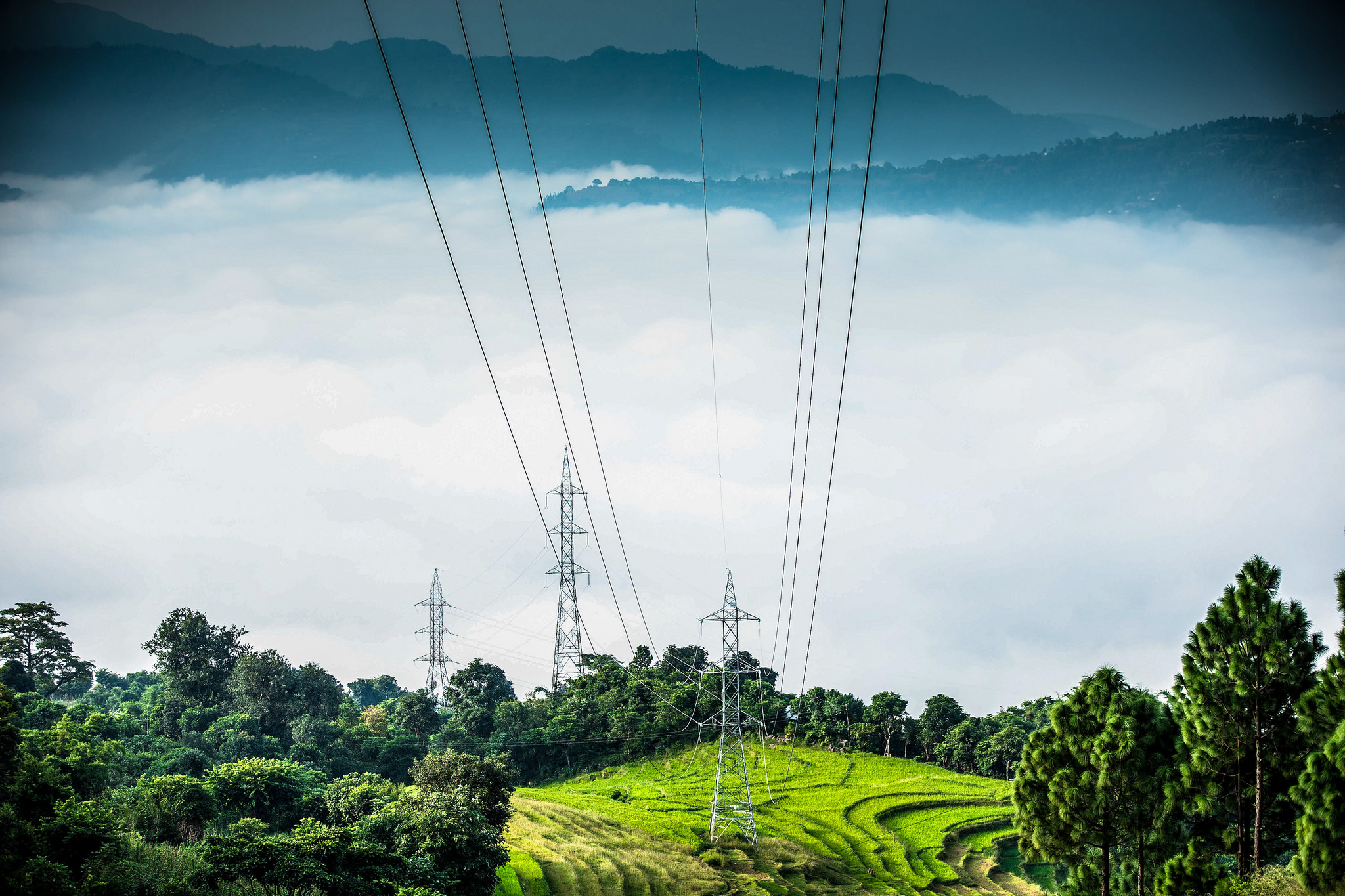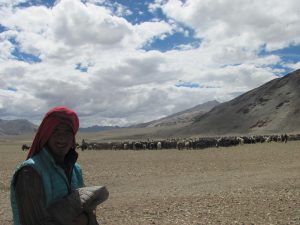With 6,000 rivers and steep Himalayan slopes, it’s not surprising that Nepal links its future to hydropower development. But this is not new. The oldest hydropower scheme in Nepal, at Pharping near Kathmandu, was constructed in 1911 at the command of then prime minister Chandra Shamsher Jang Bahadur Rana. Since the 1960s, private developers and INGOs alike have canvassed the country prospecting for good hydropower sites. Hundreds of millions of dollars have been invested in hydropower planning in the last two decades alone. And yet today, Nepal generates a meagre 800MW of hydroelectricity while 60% of the country still has no access to electricity and urban areas require up to 16 hours of load shedding (planned power cuts) during the dry season.
These depressing hydropower statistics, however, belie the strength of recent proclamations made by political parties. The Nepali Congress party vowed to generate 5,000MW of electricity within five years. The United Marxist-Leninists followed up by promising to end load shedding in the country by completing all major hydropower projects within ten years. Not to be outdone, the UCPN-Maoist party then said it would end load shedding in three years and produce 10,000MW in the next ten years.
Understandably many people in Nepal and in India, who would like to import this energy, are committed to overcoming the impediments to developing Nepal’s hydropower. When I survey the roster of concerns I hear from private sector and civil society hydropower experts alike, the challenges seem to fall into one of three categories: institutional, political, and market problems. Of course, these divisions are not neat and complete; each one is heavily influenced by the others.
Institutional challenges
At hydropower conferences across Kathmandu, private hydro developers regularly line up to complain about the current process for obtaining clearances for each stage of construction across various ministries. They argue that the numerous regulatory hurdles and the slow bureaucratic approvals cut too deeply into their resources and time to recoup investments. Not only do they suffer, the argument goes, but this also dissuades foreign investors who take their projects and dollars elsewhere.
Regulatory problems aside, other potential hazards lurk within a legal structure that is sorely out of date with regard to hydropower and natural resource use. For eight years Nepal operated under an interim constitution that in many places contradicted previous acts and policies related to hydropower. The Indian backed Upper Karnali project, for example, was approved in 2014 by the Investment Board of Nepal. However, critics point out that article 156 of the interim constitution requires two-thirds parliamentary approval for all agreements relating to natural resources. For this reason, one Nepali legal scholar told me, it is conceivable that every hydropower project constructed since 2007 could face legal challenges that could delay construction.
At the heart of Nepal’s hydroelectric conflicts sits the Nepal Electricity Authority (NEA), a World Bank project from 1983 that provided operational efficiencies when the total demand in Nepal hovered around 100MW. Today, it is generally regarded as a sclerotic, bloated and corrupt body that cannot properly manage Nepal’s hydropower future. Defenders of NEA—and there are a few—say the institution has its hands tied financially by artificially low tariff rates that ensure most Nepalis who live on the grid can afford to buy its energy. These low tariffs mean that NEA sits in the red year after year, buying energy from individual projects that it cannot sell at a profitable rate.
Political problems
The extreme volatility that has characterized Nepali politics since 1990 — 25 governments in that time and a long running civil war — has perhaps posed the largest challenge to hydropower development as party leaders have devoted more attention to obtaining ministry appointments rather than generating megawatts. As Kathmandu-based journalist Thomas Bell has written, “The starting point to think about Nepal’s failed development is that the country’s rulers have never been motivated by the national interest.” The new constitution in 2015 augured fresh change, but was quickly met with a six-month blockade along its southern border as Nepalis and Indians alike objected to provisions regarding citizenship and plans for establishing a federalist structure.
Behind this front stage of turmoil and fragility sits India, a dominating silent presence in all Nepali affairs. Rumours vary wildly as to the extent of India’s influence in the halls of Singha Durbar, but even the most pro-Indian Nepalis express wariness about allowing India too much of a hand in Nepali politics and on its natural resources. As a result, Indian-backed hydropower projects, such as Upper Karnali and Arun-3, have met significant resistance, primarily from the Maoist parties who preach a nationalist and isolationist message to the country. The GMR Consortium, which has the license to build Upper Karnali, was forced to stop construction during the blockade as Nepali opponents began vandalizing their assets in Kathmandu and Surkhet.
Market hassles
There is an existential cloud that hangs over Nepal’s hydro development which owes its formation to the general youth of the country’s electricity market: energy pricing. The NEA is charged with generating the country’s energy demand forecasts, which are greeted with tremendous scepticism. Developers and government ministries claim that the NEA lowballs the forecasts to avoid taking on more power purchasing agreements, while the NEA claims developers overstate this potential market in order to develop projects that may generate more electricity than the country can absorb or export. Beyond that, these parties quibble over pricing and how to establish rates that will reward developers and be attractive to foreign and domestic consumers. To date, that Golden Mean has proved elusive and will remain so at least until Nepal can get one of its mega projects online and begin power trading with India in earnest.
Finally, earthquake risks in the Himalayas had been the elephant in the corner for many years until it burst out in the form of a 7.8 magnitude earthquake in April 2015, causing incalculable damage and reigniting long-ignored concerns about the suitability of building dams in this region. The quake also stirred serious attention from some lawmakers. Writing in the New York Times, Gagan Thapa, a Nepali Congress member of parliament, suggested that the country’s ardent focus on hydropower may be mislaid: “What is clear is that Nepal cannot afford to delay diversifying its energy portfolio… [t]he norm should be the development of microgrids supplied by a mix of electricity sources (solar, biomass, clean waste incinerators, etc.).” Talk of this kind had long been absent from discussion of Nepali energy development.
While the blockade has been lifted and relief work moves forward, it is still difficult to make predictions about how energy development in Nepal will be transformed by the earthquake and the country’s new constitution. But seismicity will certainly now have a prominent place in all high-level energy discussions. If anyone needed a reminder of the need for this refocus, Thapa said, “When the grid went offline after the quake, even in the capital the only public lights that stayed on were solar.”
And a final word on China’s nebulous presence in Nepali hydropower seems important to include here. While Chinese companies like Sinohydro have participated in some small to medium projects, such as the Upper Marsyangdi in central Nepal, their intentions remain somewhat mysterious. State owned China Three Gorges Corporation acquired the license to build the West Seti project in 2013 and then immediately went silent for the next year. In late 2014 and early 2015 Three Gorges resumed preliminary studies at the West Seti site and then again withdrew after the earthquakes and did not resume talks with the Nepali government until early 2016.
See also: Will China invest in Nepal’s hydropower plants?
Some observers have suggested that China’s increasing interest in Nepali hydropower could compel India to become more friendly in its negotiations and politics with Nepal. In fact, many cited Modi’s USD 1 billion dollar soft loan to Nepal as evidence of India’s concerns about Chinese influence. But given China’s unpredictable stance on Nepali hydropower to date, that hope may be a bit premature.







